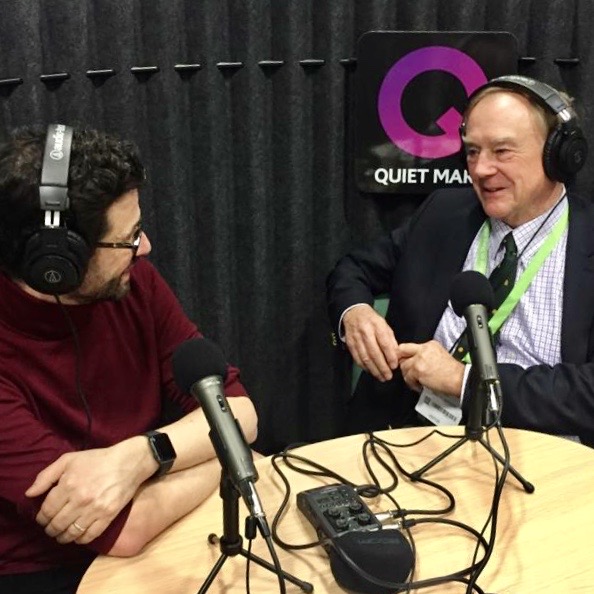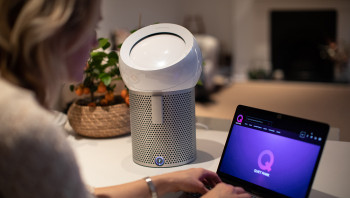Closing the door on excessive noise with Quiet Mark


Closing the door on excessive noise with Quiet Mark
By TOTAL FABRICATOR MAGAZINE
Image: Enfield Speciality Doors at Colyer Fergusson Building, Kent University
As international award programme, Quiet Mark, homes-in on reducing excessive noise in the built environment with the launch of its Acoustics Academy, one of its accredited manufacturers reveals the many opportunities for acoustic-rated door products.
From the thunder of a domestic washing machine to the roar of a plane taking off, noise impacts on all of us and according to the World Health Organization (WHO), excessive noise ‘seriously harms human health’. In 2018, WHO calculated that at least 1m healthy life-years are lost every year in western Europe because of environmental noise, which is believed to stimulate the stress hormone, cortisol. This damages blood vessels over time, contributing to issues such as high blood pressure, heart attacks and coronary heart disease.
In light of such stark findings, noise reduction is gaining traction in the built environment, a fact which has been corroborated by the recent launch of Quiet Mark’s Acoustics Academy.
Quiet Mark is an independent international award programme for high performance, low-noise technology, associated with the UK Noise Abatement Society charitable foundation. It encourages companies worldwide to prioritise noise reduction, driving designers and manufacturers to reduce sound levels in their products and enabling consumers to ‘enjoy a less stressful domestic and workplace soundscape’.
Quiet Mark’s new Acoustics Academy is a free to use online platform which seeks to sustain the well-being benefits of noise reduction by supporting improved acoustics in the built environment and every building application area.
Among the approved products already onboard are windows from national UK retailer Everest and American brand Pella, and acoustic doors from Middlesex-based manufacturer, Enfield Speciality Doors. Speaking to Quiet Mark’s Simon Gosling in the Quiet Mark Podcast, which was launched alongside the Acoustics Academy earlier this year, Enfield’s CEO, Nigel Sill, explains how some of the company’s Quiet Mark certified products have enabled architects to improve the acoustics and sound design of buildings, without compromising on visual aesthetics
One notable example of this, discussed by Nigel in the podcast, is the Colyer-Fergusson Music Building at the University of Kent (pictured, top), where Enfield’s acoustic doors blend-in perfectly with the striking wooden interior of the space.
Achieving both optimum aesthetics and acoustics for the project was a challenge, according to Nigel. “The doors had to work,” he says. “The sound diffusion had to work as planned so it was a good overall quality in the room. The architect wanted the doors to blend-in so it looked homogeneous and the walls all looked good. He was very proud of that building with good reason.”
With other notable projects including the world-famous Abbey Road Studios and the Alan Turing research centre at the University of Manchester, Enfield holds claim to the best rating in the country for a single acoustic door, “which is why,” says Nigel, “they’re used so frequently for interview rooms where recordings are taken for court use.”

Image: Nigel Sill spoke to Simon Gosling for the Quiet Mark Podcast
But it’s not just about good acoustics and blended aesthetics. Nigel explains that the doors are subjected to fire testing once they’ve been certified for their acoustic properties.
“The doors also have to be usable in a fire,” he says, “so if you make them very [acoustically] effective, you can’t use them quickly. If there is a fire, you need to evacuate… so the fire properties always outweigh the sound properties.”
As the concept of ‘wellbeing’ is increasingly prioritised in the built environment, demand for acoustic doors is accelerating as architects look to specify products with noise reduction in mind. “Over the last five years, we’re getting more and more orders for acoustic doors – and more of the top-end acoustic doors,” says Nigel. “That’s very noticeable.”
Residing under Heathrow’s flightpath, Nigel himself is no stranger to the damaging impacts of excessive noise. Speaking of louder, pre-Covid, pre-lockdown, times, Nigel says: “When the early morning flights from Hong Kong come in about 04:00, 04:30, depending on the strength of the wind, and if the late flights have been delayed to go off at midnight, you’re only going to get four hours sleep… You wake up in the morning exhausted. Once you get woken up at 04:30 in the morning, you never get back to sleep properly.”
Which raises the question regarding the viability and popularity of acoustic doors for domestic use.
While perhaps not so well-suited to most domestic bedrooms where, according to Nigel, most of the noise from flights, for example, would probably come through the ceiling as opposed to the door, applications such as home cinemas and children’s play rooms, are becoming increasingly popular. Referring to aspiring musicians up and down the country, Nigel says that experiencing a family member’s drum or violin practice “is not funny”, adding: “It’d drive anyone nuts, so, I would recommend an acoustic door if you can!”
At a time when the government is encouraging the UK to ‘build, build, build’, quality is paramount according to Quiet Mark, especially when it comes to aural design. The organisation’s mission is to ensure that acoustic quality is never overlooked in the built environment and its team of acoustic specialists review products for performance, characteristics and cost. The Acoustics Academy platform is designed to provide appropriate acoustic solutions for every building scenario; enabling them to be found and sourced, easily and quickly.
Poppy Szkiler, founder and CEO, Quiet Mark says: “Acoustics Academy is our new online platform developed to serve the building sector by further equipping and empowering industry to easily find the latest expert-approved acoustic materials, products and solutions organised in a one-stop online hub for the right building applications and scenarios.
“Building design is now evolving to prioritise responsible sound-design transforming living spaces into harmonious soundscapes that deliver excellent acoustics to support health, wellbeing and desire for quieter living. A property that has been carefully designed acoustically creates a beautiful, calm, supportive environment, reducing unnecessary stress for all inhabitants for generations to come.”
Read the original article on the Total Fabricator website HERE.













 Quiet Mark Founder
Quiet Mark Founder